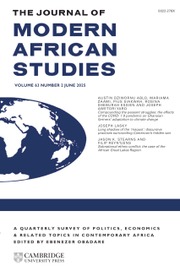In Acholi Intellectuals: Knowledge, Power, and the Making of Colonial Northern Uganda, 1850–1960, Patrick William Otim presents a captivating story of indigenous intellectuals who shaped and were shaped by the discourses in their society during pre-colonial and colonial Uganda from 1850 to 1960. Around this time, Acholi society transitioned from preliterate to literate and their intellectuals transitioned from poet musicians, fortune tellers and royal messengers to college graduates, well couched in British mannerisms and traditions.
Hitherto engrossed in intra and inter-clan feuds, sometimes escalating to bloody conflicts, Pre-colonial Acholi intellectuals performed vital roles as augury experts, war leaders, court messengers and diviners. They foretold the coming of Arabs and Europeans, led their chiefdom armies to battle and delivered vital kingly messages to remote destinations – running all the way, since there were no animal or motorised transport. The messengers were not ordinary, dull and character-less people as portrayed by the earliest European visitors. Rather, they were complex, quick-witted and intuitive individuals on whose brain power the different polities depended. Europeans underestimated the intellect of those they vaguely called ‘runners’ because they couldn't effectively interpret their comprehensive patterns of behaviour and intricate official duties.
Otim challenges the stereotypical perspectives that Acholi chiefs were savage leaders lacking in character, power, influence and control over their subjects. To the contrary, he argues that Acholi chiefs had cabinet, state officials, army generals and palace staff. They were democratic, amiable and heedful to the extent that they couldn't perform any official function such as declaring war without the consultation and permission of intellectuals responsible for those unique engagements. The long-held Eurocentric view that pre-colonial Acholi were heathens without any spirit foundation is equally rejected. The book reveals that the Acholi knew and worshipped God albeit referring to Him variously as Isa, Allah and Anabi – all due to the influence of the Arab slave dealers who cajoled them to abandon Jok and use those foreign names.
British colonial penetration and rule in Acholiland wouldn't have been easy without the feat of homespun intellectuals who guided the colonialists, interpreted for them and helped remove negative sentiments against them. Such intellectuals were revered by the Acholi and approved wherever they went. One of them was Agoro whom Postlethwaite, the first European colonial District Commissioner in Kitgum, interfaced with. ‘Agoro’ said Postlethwaite ‘knew all the chiefs in the area. He knew all their capitals and had a gift of language’ (p. 142). These royal messengers, known by the Acholi as Lu or pa Rwot, were multi-lingual due to their earlier interactions with Arabs, Swahili traders and neighbouring communities including Banyoro and Madi.
The major limitation of the book is over concentration on the histories of west Acholi chiefdoms like Koch, Payira, Pabo, Patiko and Lamogi. Otim mentions on page 10 that there were over sixty chiefdoms in the land but, he confined the research to west Acholi (Acoli mapiny). In Acoli mamalo (East Acholi) he does not go beyond Puranga and Padibe chiefdoms yet there were top-hole polities like Palabek, Amyel, Paimol and Omiya. Likewise, he tackles Acholi involvement with Ivory and slave traders from Khartoum by mid-nineteenth century but the extensive and well-known long-distance commercial links with Somalis from the Horn of Africa and the Swahili traders from Mombasa are largely neglected.
My work on the Acholi (Amone Reference Amone and Mansouri2017: 301) reveals the impact of Arabs in the society with words like Bakacic, Aram and Kalam from Arabic baksesh, haram and qualum, respectively, already in use by the time Reverend Lyoyd arrived in Acholiland. The first people to learn and use such words were those who carried the language of the Arabs and interpreted for them. Such persons were the first intellectuals of the Acholi people and they were scattered all over the land, not just west Acholi.
In sum, Acholi intellectuals is a milestone in the understanding of the highbrow individuals who managed the affairs of the different polities of the Acholi nation from mid-nineteenth century to the dawn of independence. Formerly unknown and unspoken of, they held their respective kingdoms together and enabled their chiefs to govern undeterred. When European colonialists arrived, they did not only promote their foreign rule but also helped locals terminate it by 1962.



